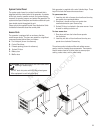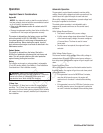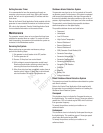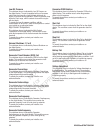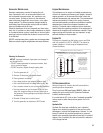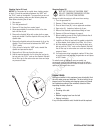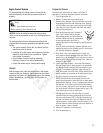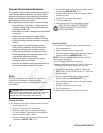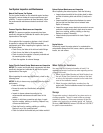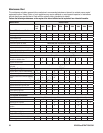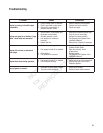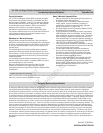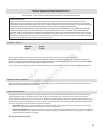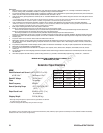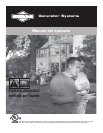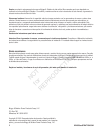19
Fuel System Inspection and Maintenance
Natural Gas/Propane Fuel System
The fuel system installed on this industrial engine has been
designed to various standards to ensure performance and
reliability. To ensure compliance to these standards, follow
the recommended maintenance schedule contained in this
section.
Pressure Regulator Maintenance and Inspection
NOTICE: The pressure regulator components have been
specifically designed and calibrated to meet the fuel system
requirements of the engine.
If the regulator fails to operate or develops a leak, it should
be repaired or replaced with the OEM recommended
replacement parts. When inspecting the regulator, check for
the following items:
• Check for any fuel leaks at the inlet and outlet fittings.
• Check for any fuel leaks in the regulator body.
• Check to ensure the regulator is securely mounted and
the mounting bolts are tight.
• Check the regulator for external damage.
Venturi/Throttle Control Device Maintenance and Inspection
NOTICE: The venturi and throttle body components have been
specifically designed and calibrated to met the fuel system
requirements of the engine.
When inspecting the venturi and throttle body, check for the
following items:
NOTICE: A dirty air cleaner may significantly alter the venturi
performance.
• Leaks at all fittings.
• Ensure the venturi and throttle body are securely
mounted.
• Inspect air cleaner element according to the
recommended maintenance schedule found in this
section.
• Inspect air inlet hose connection and clamp. Inspect
hose for cracking, splitting, or chaffing. Replace if any
of these conditions exist.
• Check fuel lines for cracking, splitting, or chaffing.
Replace if any of this conditions exist.
• Check for leaks at the throttle body and intake manifold.
Exhaust System Maintenance and Inspection
When inspecting the exhaust system, check the following:
• Inspect exhaust manifold at the cylinder head for leaks
and that all retaining bolts and shields (if used) are in
place.
• Inspect manifold to exhaust pipe fasteners to ensure
they are tight and that there are not exhaust leaks.
Repair as necessary.
• Inspect the oxygen sensor electrical connector to ensure
connector is seated and locked, check wires to ensure
there is no cracking, splitting, chaffing, or burning.
Replace or replace if necessary.
• Inspect exhaust pipe connection for leaks. Repair if
necessary.
Engine Exterior
Periodically inspect the engine exterior for contamination
and potential damage from dirt, leaves, rodents, spider webs,
insects, etc. and remove.
When Calling for Assistance
You must have the following information at hand if it is
necessary to contact a local service center regarding service
or repair of this unit:
1. Obtain the unit Model Number and Serial Number from
the unit ID label. See Controls for location of the label
or refer to the information recorded on the inside front
cover of the installation manual.
2. Obtain the engine identification numbers from the
engine label. See the Installation manual for location of
this information.
Storage
The generator system is designed for long term service as
a backup generator. There is no need to take any storage
precautions. However, if it becomes necessary to take the
system out of service for an extended period, call Technical
Services at 800743-4115, between 8:00 AM and 5:00PMCT
for specific recommendations.
NOT
for
REPRODUCTION



